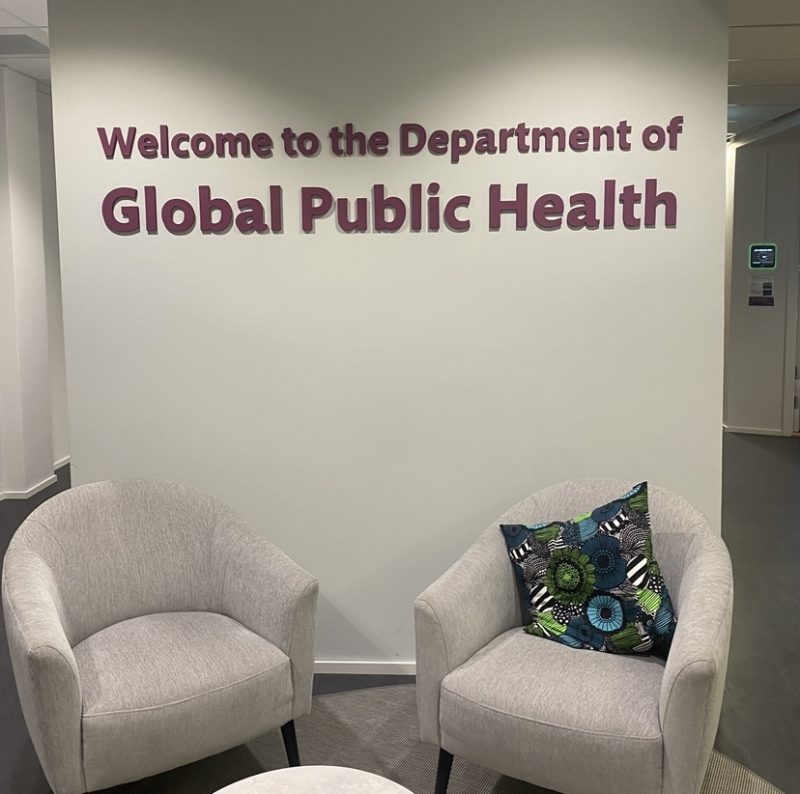
Epi or HPP? A brief guide on the two Public Health Science tracks
Happy almost-fall-semester! To all incoming students, welcome! We hope you are excited to be studying at KI starting this coming Monday. I hope you had a great Welcome Week! With so many new introductions, it can sometimes be overwhelming to receive a lot of program-related logistic information from multiple sources, especially regarding the program syllabus. I feel like this can especially be a source of slight confusion for us, as this program houses two similar yet distinct tracks: Epidemiology and Health Promotion and Prevention. With this in mind, this is a short post summarizing the main similarities and differences between the two tracks.
Discretion: This information is based on the current syllabus being used for 2024-2025 and may be subject to change in the following years! Make sure to check out the program outline and program syllabus page for the most up-to-date information.
Similarities
Both specializations are under the same Masters program, namely the Public Health Sciences program. Because of this, most of the courses taken are the same. By that, I mean literally all but three courses are the same for both tracks! During the first semester, we all take the same courses together. In the second semester, we separate for about a month between late January and mid-February.

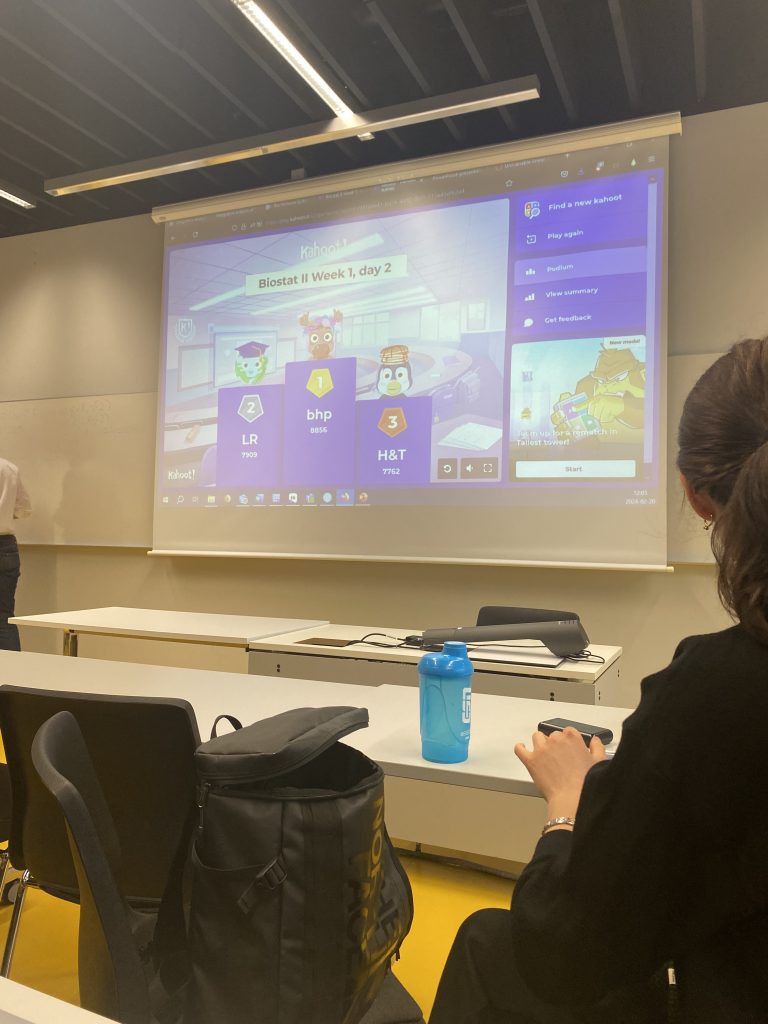
Both courses are worth 5hp (credit points that go towards degree completion). In the third semester, we are together for the first half of the semester until about the end of October. We then separate for two courses i.e the last two courses before writing our thesis between November and mid-January. These courses are worth a bit more at 17hp total.
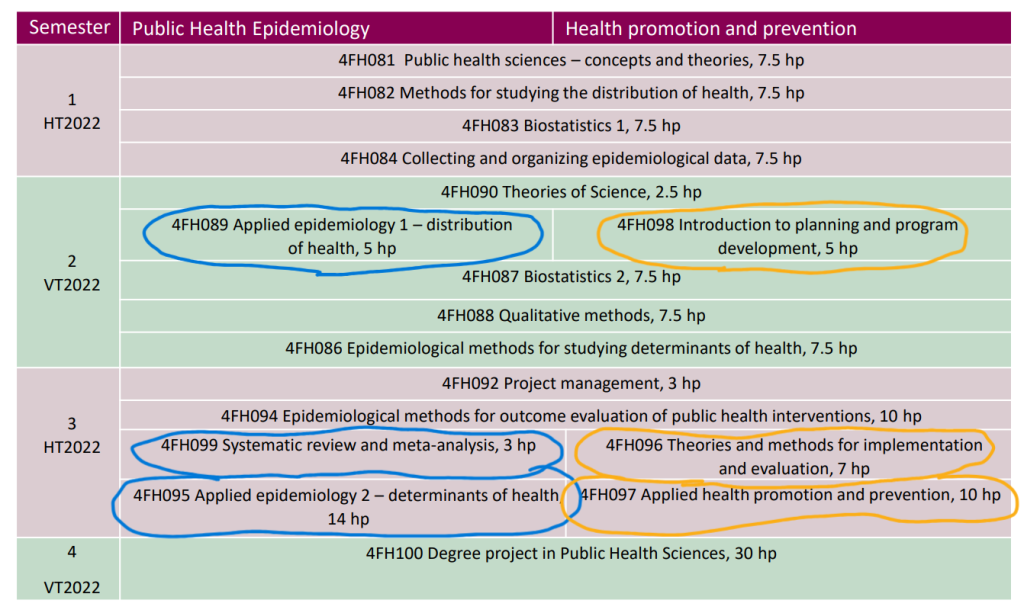
In terms of time spent together, there won’t be any major separation during the first year except for one course. You will all be enjoying (and maybe suffering) the majority of courses together, so try not to worry about separating from each other from the start!
Differences
Although we have only taken one of three track-specific courses so far, we, based on our personal experiences, noticed some differences between the course content (obviously) and the structure between the two tracks, which may reflect how the remaining two courses will differ from each other. Outside the courses, I think the master’s thesis topics and methods can differ quite a bit between the two tracks.
Epidemiology
In my experience, “Applied Epidemiology 1” focused on learning about real-life surveillance programs how data is collected and analyzed, and descriptive epidemiology via using statistical software. The learning style was quite diverse. We had a lot of interactive lectures that actively engaged us in class, group work, and quite a bit of individual work (generating your own codes with a written report and a presentation based on them).

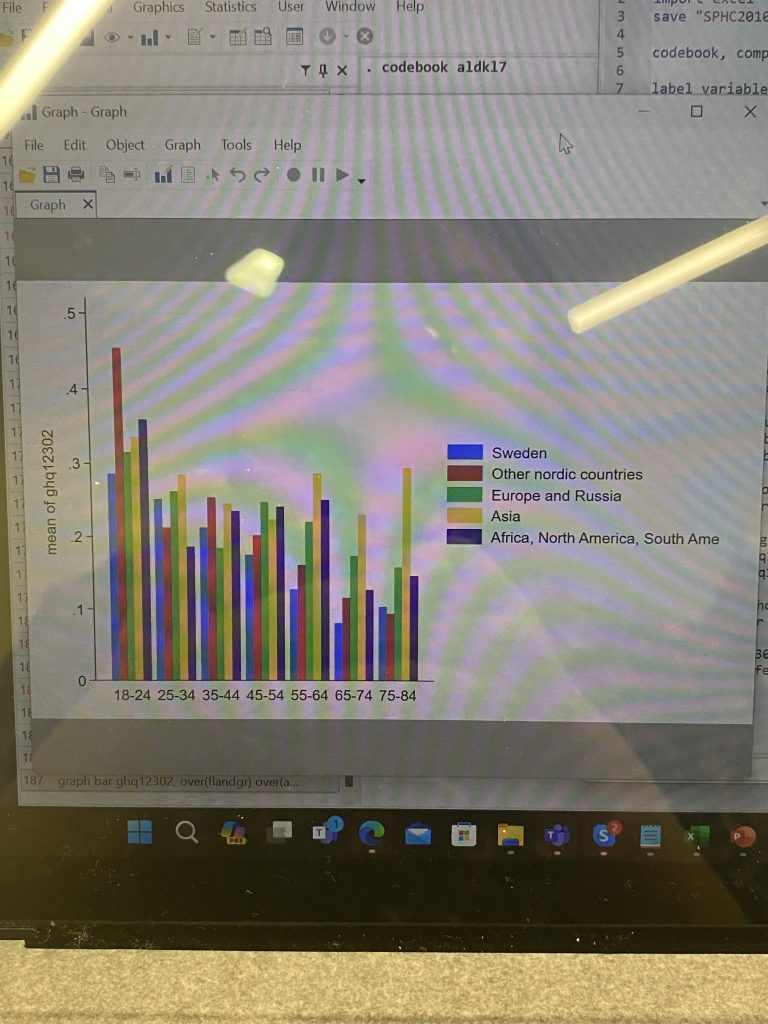
I felt like it was quite information-heavy as we learned about different surveillance programs and models, and quite data-driven (no surprises here). We spent alot of time on Stata (statistical software) to clean and analyze data for us to describe. All in all, this was our first introduction to the more quantitative, analysis, and evaluative aspects of public health. Some classmates, myself included, thought it was a bit tough at times as most lectures were mandatory. This sometimes meant long hours spent in a classroom every week, but such is life!
Health Promotion and Prevention
Based on my classmates’ personal experiences, “Introduction to planning and program management” was very hands-on, groupwork-focused, and encouraged a lot of critical thinking. In short, HPP folks got an introduction on how to plan and develop a health intervention program. They did so by analyzing existing ones together by commenting on assigned papers and/or articles.
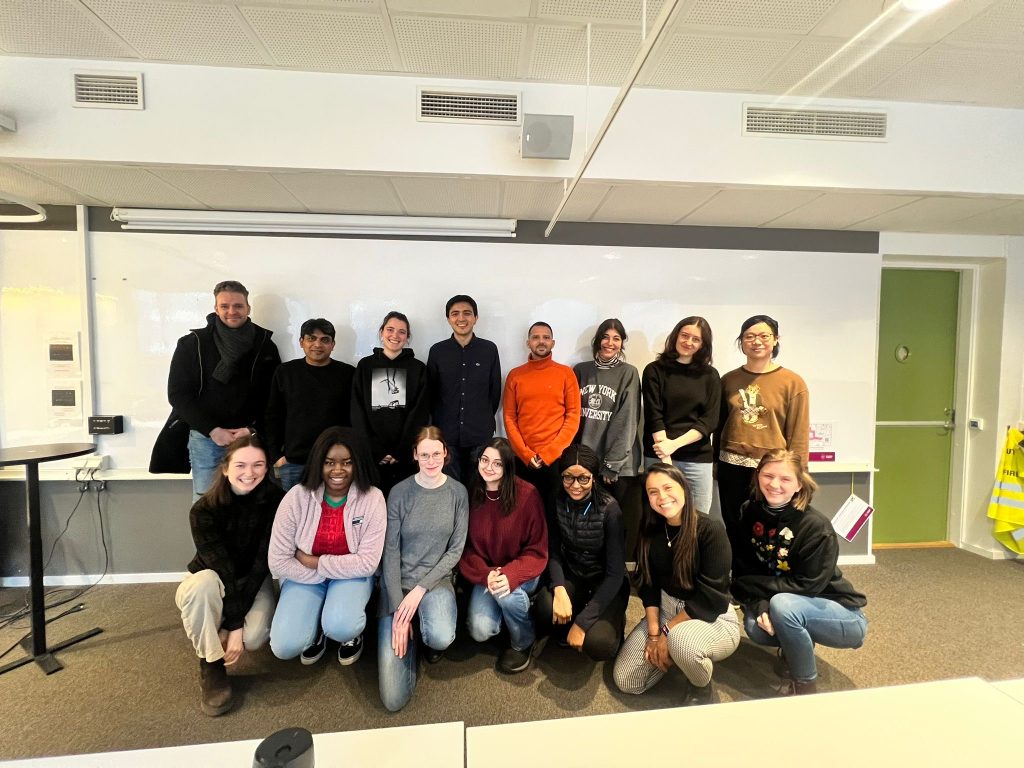
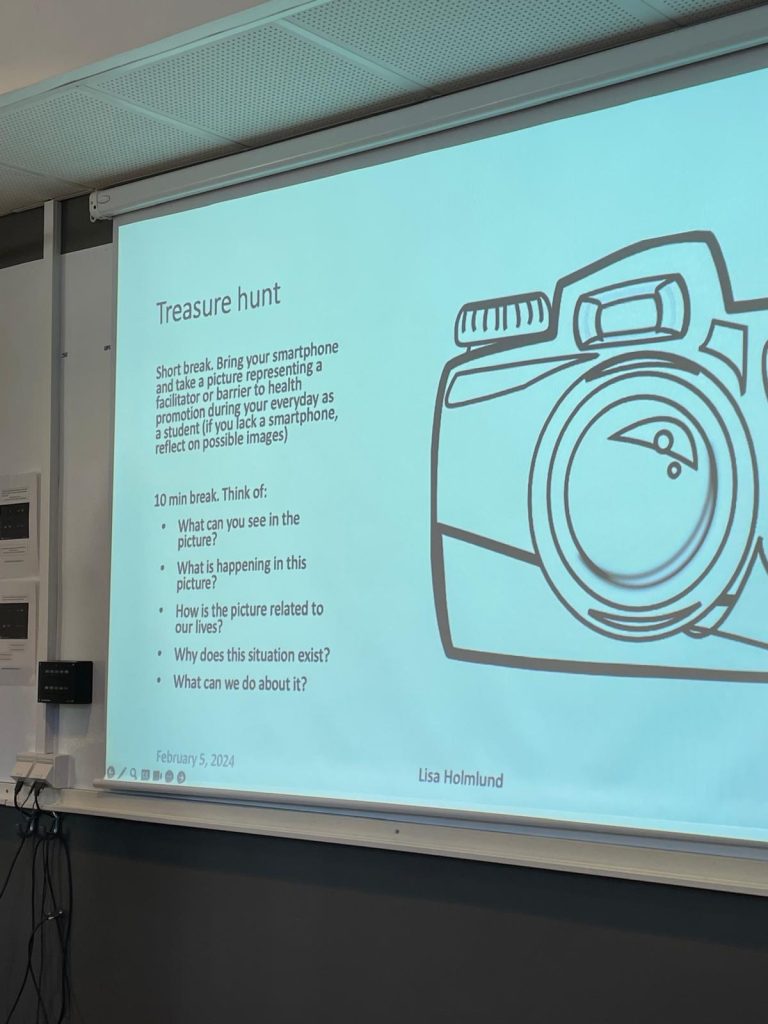
They also got to participate in hands-on exercises promoting creativity. An example is a visual exercise that involved taking pictures of things around them that either facilitated or blocked health! Overall, it seems like they focused a lot on collaboration, bridging creativity and theory together, and developing “solutions” more than analyzing the data of various disease occurrences.
Masters thesis
Epi students can use primary or secondary quantitative data OR comprise a comprehensive systematic literature review including a meta-analysis. HPP can either use qualitative (primary or secondary) OR quantitative data (systematic review but no meta-analysis).

In addition, their project must include the analysis of an intervention/policy. So what can this look like in practicality? Below are some examples of past thesis titles from both tracks!
HPP:
“Implementation of digital sexual and reproductive health services in youth clinics in
Stockholm – A qualitative study exploring midwives’ perceptions of barriers and
facilitators to service provision.”
“Follow-up evaluation of the effectiveness of organised human papillomavirus
(HPV)-based screening to prevent invasive cervical cancer – a randomised
healthcare policy trial in the greater Stockholm area”
Epi:
“Incident arrhythmia in patients with systemic sclerosis: A Swedish registry study.”
“Migration as a Risk Factor for Schizophrenia and Bipolar Disorder in a Swedish
National Sample.”
Remember that it is normal not to know what you want to write your thesis on during your first semester or earlier! With that being said, having an instinctive or rough idea of what type of method or topic you might enjoy working with on a longer basis, may help guide you!
I hope this provided a little bit of clarity for those wondering which track to apply for. For more perspective, check out the blog post of a previous DA that comprehensively highlighted some differences! (But be sure to refer to the most up-to-date syllabus of 2024-2025!) See you soon!

Risa-Public Health Sciences
Hej! I am Risa, a Japanese Master's student in Public Health Sciences starting my studies in 2023 at Karolinska Institutet. Having been interested in the multidisciplinary, globally applicative, and cooperative nature of the public health field, paired with my familiarity with KI’s global reputation, I’ve always had the desire to study at KI. I enjoy curating playlists, petting cats, and going on scenic walks around Stockholm in my free time.

0 comments